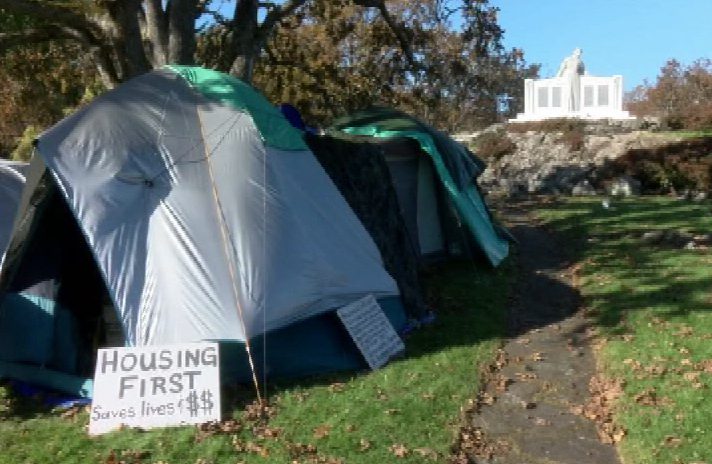

File photo.
The Capital Regional District says fewer people were unsheltered and sleeping outdoors in 2018’s homeless count.
On the night of March 15, 2018, volunteers found 158 unsheltered people, 18 per cent fewer than in 2016.
The 12-hour homeless count first took place in 2016, and this year expanded to count more communities and more people.
A total of 1,525 individuals experiencing sheltered and non-sheltered homelessness were counted and more than 900 participated in the survey as compared to the 1,387 found February of 2016 who were experiencing sheltered or non-sheltered homelessness.
“The effort to address homelessness in the Capital Region has a large scope that crosses municipal boundaries. The 2018 Point in Time Count was restricted to the census metropolitan area, however, the report recognizes a separate count completed on Salt Spring Island and broadened our reach to include the experiences of individuals experiencing homelessness in Sooke,” said CRD Board Chair Steve Price.
Other statistics stood out as well. Most of the homeless population was from B.C., most were men, and most had been homeless for long periods of time.
The Capital Regional District (CRD) said in a release that responses to the survey indicated that homelessness starts at an early age, indicating there are culture and age-related barriers to accessing housing and services.
Forty per cent of respondents had their first experience of homelessness at 18 years or younger. Almost 20 per cent of those surveyed were over 55, another 20 per cent were under the age of 25.
Thirty-three per cent of the respondents identified as Indigenous, indicating an overrepresentation in the Greater Victoria Count as Indigenous people make up 4.7 per cent of the broader population.
About two-thirds of those counted identified as men and many of those who volunteer spoke to had been homeless for long periods of time. Almost 80 per cent had been homeless for more than six months over the past year.
One-third of respondents identified as Indigenous, making them much more overrepresented as compared to their broader population which is 4.7 per cent.
Most respondents were from British Columbia, with eighty-three per cent having lived in Victoria for more than one year. Almost 57 per cent of the remaining individuals had lived somewhere in B.C. prior to coming to Victoria.
Respondents generally said they were homeless due to economic issues such as a loss of a job or inadequate income, or the need for services like addiction, health and/or mental health.




